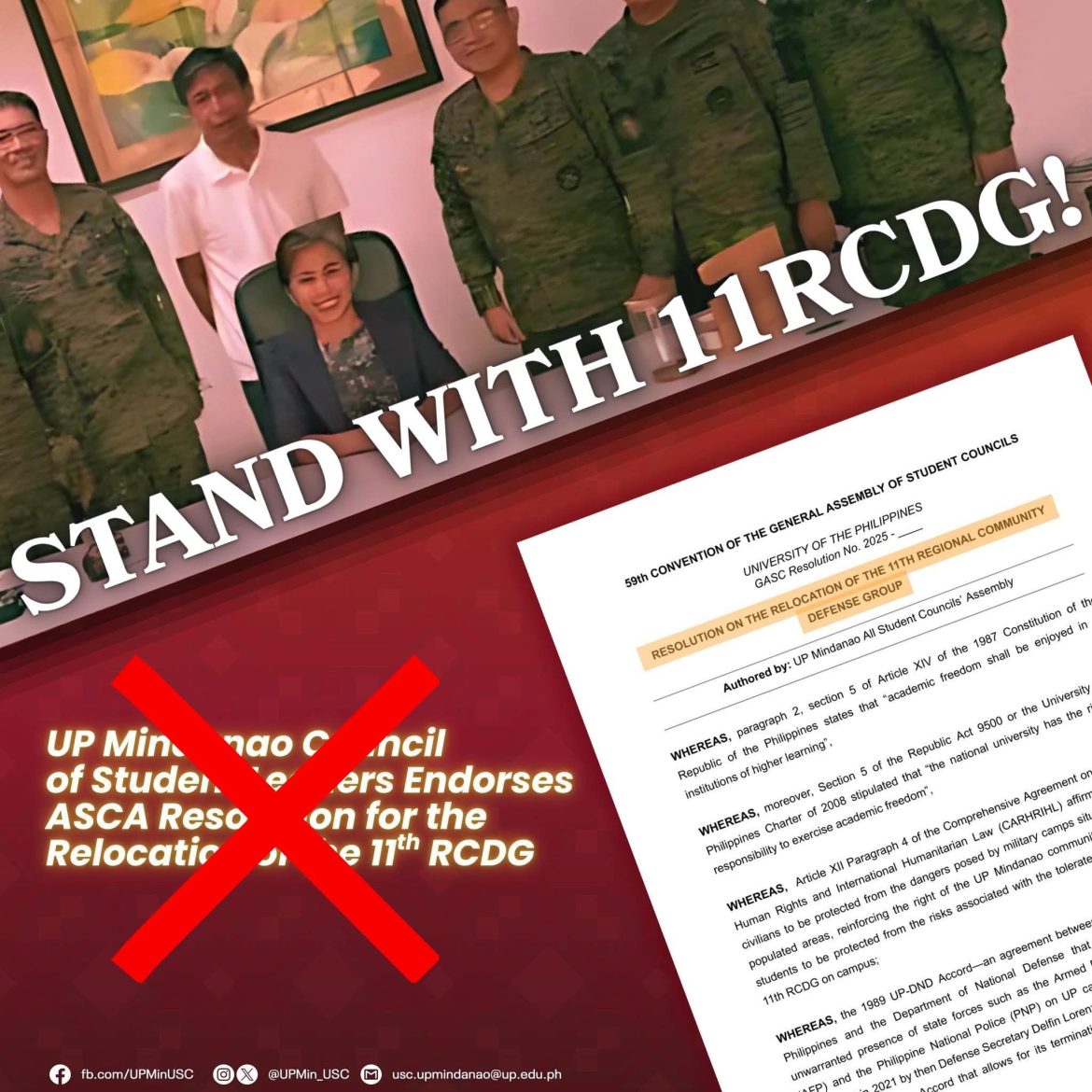A FORMER high-ranking rebel leader refuted allegations of militarization of the University of the Philippines-Mindanao as he asserted that the presence of the 11th Regional Community Defense Group (11RCDG) is a long-standing, civilian-oriented service and not a threat to academic freedom.
Jam “Ka Amihan” Saguino, former secretary of NPA Guerrilla Front 20 and former national vice chair for Anakbayan Mindanao, as well as former chairperson of League of the Filipino Students in UP Iloilo, said the calls to remove the 11RCDG came from a “loud but misinformed minority” who twist facts for a “tired and radical narrative.”
In a post on his Facebook page, Saguino emphasized that the 11RCDG, a unit of the Army Reserve Command, is not a combat unit, nor is it present to surveil, suppress, or sow fear among students.
He highlighted that the reservists are not “warfighters roaming campus grounds” but are ordinary Filipinos – including teachers, farmers, nurses, engineers, workers, doctors, and students – who undergo basic military training. Their primary role, Saguino stated, is to serve their community during disasters, assisting in relief efforts, medical missions, environmental cleanups, and public safety drives.
Crucially, Saguino pointed out that the 11RCDG’s presence in Barangay Bago Oshiro predates the establishment of UP Mindanao. The unit was already stationed in the area, occupying and developing part of a government-assigned reservation as early as 1957.
UP Mindanao was officially established much later in 1995 through RA 7889 and Presidential Proclamation No. 822 s. 1996, granting the university land within the same existing government reservation.
“UP Mindanao did not get militarized. It was built beside an existing, peaceful, civilian-support unit of the AFP,” Saguino asserted.
For nearly three decades, the 11RCDG and UP Mindanao have coexisted without incident. Saguino questioned why such a unit is being targeted by radical groups, suggesting that “the real objective here is not student safety.”
He alleged that the true agenda is to “push state forces out of civilian spaces to allow unhindered recruitment by underground communist fronts.”
Saguino described this as a tactic to “demonize the uniform, plant the fear, make students distrust the government, then fill that vacuum with an alternative narrative, one that glorifies rebellion and convinces young people to hate the very country they were raised in.”
Saguino concluded by arguing that the 11RCDG brings “structure, readiness, and a sense of responsibility to community and country.”
Through programs like the Reserve Officers’ Training Corps (ROTC) and other civic initiatives, they aim to empower youth and instill discipline, disaster preparedness, and nationhood, which he described as values essential for any functional democracy.
“There is nothing oppressive about helping during a flood. There is nothing fascist about evacuating people during an earthquake. There is nothing militaristic about preparing young people to serve their fellow Filipinos in times of crisis,” Saguino stated.
He warned that “what is dangerous is silencing institutions that defend the people and replacing them with movements that pretend to speak for the people while working to dismantle the government from within.”
Saguino reiterated that the 11RCDG does not threaten academic freedom but rather “exists so that when the freedom we enjoy is put at risk, there are Filipinos trained and ready to protect it.”
Photo courtesy of Jam Saguino



